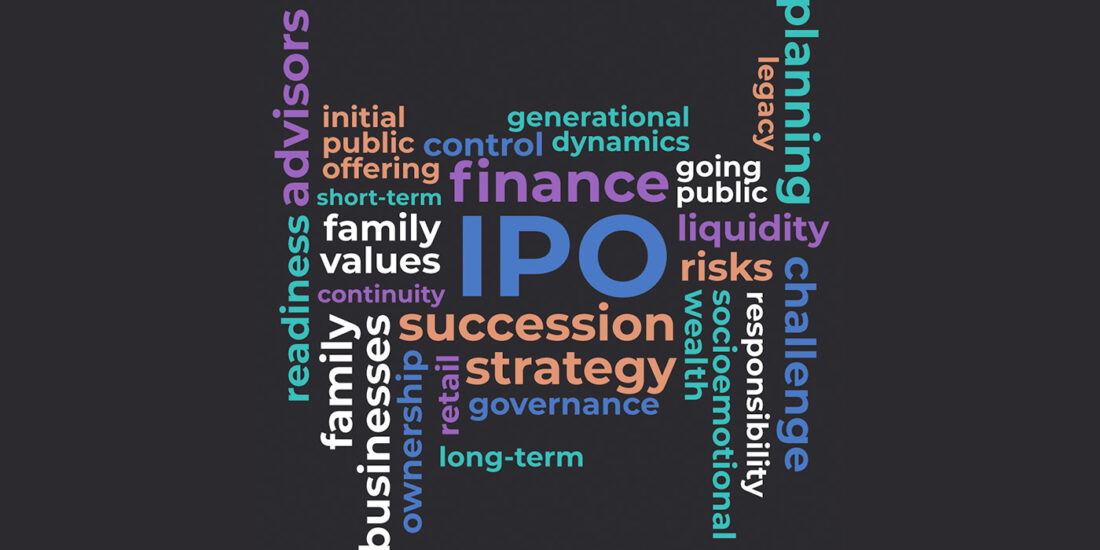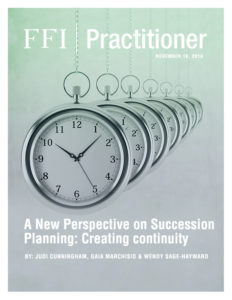
View this edition in our enhanced digital edition format with supporting visual insight and information.
Introduction
Succession planning is a term many advisors use to describe their services when marketing products and services to family enterprise clients. Under the label of “succession planning,” clients are presented with different products, services and outcomes, often resulting in confusion.
We believe as an advisory community we need to transform our definition of “succession planning” and find a common language to articulate a broader, more inclusive process — one that effectively meets the needs of the whole enterprise system. This article encourages family business advisors to evolve their perspective around the idea of creating continuity. This mindset incorporates the full spectrum of a family enterprise, encompassing the family, ownership and business systems, as well as activities beyond planning.
The term “continuity” is a more useful term that leads advisors to different thinking, advice and recommendations. We aim to help create shared language and a common definition of continuity — of which succession planning is an element — while orienting those we advise to a more continuity-focused perspective.
The Many Faces of Succession Planning
Advisors have a myriad of views on succession planning, resulting in different advice about leadership and ownership transitions. Depending on the orientation of the advisor, succession planning may focus on:
- A financial transaction: who will get ownership/equity;
- A leadership transition: who will be the leaders of the business and family; or
- The “softer” elements of the transition e.g., the psychological readiness of the individuals involved as well as the broader system.
Succession planning, in the context of transition planning, is all of these and more. A typical succession planning process shares several common features across families and situations:
-
- A transactional approach focused on the operating business, financial and legal issues
Typical succession planning is about the transition of the business (usually the largest asset). Other assets are considered in the estate plan but often ignored in the succession planning process. This approach emphasizes the “passing of the baton” version of succession, with the focus on who, what, when, and how the business will be handed over, rather than bigger-picture issues around the whys.
-
- A checklist mentality
Families and their advisors feel they must check a specific set of boxes in order to pass the baton, again typically focused on the technical elements.
-
- Short term view
Regarded as a one-time event. When the handover is done – at least for this generation – succession is over.
-
- Defined by advisors
In many cases, succession plans are driven largely by advisors, some of whom have products or services to sell: “Here’s what you need to do,” an advisor will say, with an understandable bias toward his or her own orientation and products/services.
-
- Limited family participation
Only a small subset of family members and consultants take part – often the founder and his/her spouse or the outgoing and incoming leaders and an advisor or two.
-
- One-size-fits-all
Many succession plans look similar – the result of a transaction/checklist/product-focused mentality: estate planning, trust, shareholders agreement, done!
-
- Reactive rather than proactive
Succession planning often looks at the past or is reactive to the needs of the present situation – such as the founder wanting to exit the business.
The typical view of succession planning, then, includes relevant components but is often too narrow to address a family’s full needs. We advocate instead for a perspective that puts continuity front and center.
From Succession to Continuity
Continuity creation is a dynamic process that employs a multigenerational lens supported by an interdisciplinary approach. It goes well beyond the logistics and legalities of typical succession and transition planning.
A continuity-focused approach considers questions related to multiple, interrelated components of a family enterprise (including all operating, financial, real estate, heirloom, deferred and philanthropic assets.) This broader lens encompasses the following:
-
- Familiness
Ensuring that the family has a strong foundation of values, vision and purpose is paramount, providing a raison d’etre in the family. Value creation in the family system is the main objective of the continuity process. Sometimes families choose to sell some or all of their assets but almost all wish for their family to be connected.
-
- Learning and Development
Developing and guiding the next generation to be savvy, capable owners and operators is critical to continuity. Rising-generation members need to understand the language, options, and trade-offs associated with ownership, along with the capabilities required to take on roles in the business including governance and oversight of other assets.
-
- Leadership Transition
The choice of the next leaders of the enterprise in its many forms (e.g., family, business, board, and philanthropic leadership) is a critical one with complex, interlocking issues related to who wants to lead and who is most capable on a wide range of dimensions: business knowledge, governance, interpersonal skills, credibility within the family, and the like. Beyond the who is the how. How do we best implement the transition effectively to ensure “all boats rise” in the family? The less divisive and greater sense of belonging everyone feels, the higher the chances for continuation.
-
- Ownership Transition
Effective ownership transition means answering questions such as: What does the full set of current and near-term owners want— to continue holding and/or building equity, to take distributions, or some combination? What’s the fairest distribution of ownership, including at the branch, family, and individual levels? What’s the best timing for ownership transition?
-
- Growth Goals
Families need to understand their growth goals for their assets and the tradeoffs associated with divergent objectives and payouts. For example, is it possible to grow the business to comfortably employ members of rising generations and provide liquidity for more senior members? Can they diversify their assets while reinvesting in their business at the rate they want to?
-
- Wealth Management
Wealth management is as much about communication as it is about making plans for savings and the growth of financial and other assets. Families need help even approaching this sensitive topic and understanding the trade-offs, yet again, of sharing information and plans with rising generations.
-
- Post-Ownership Planning
Outgoing family members need help with their plans for the post-owner and business operations—not only whether they will have sufficient funds with which to support themselves but what they will do and what will their new purpose be that drives their daily life?
Process of Continuity Creation
As the above items suggest, the flowing process of continuity creation must include multiple points of focus, multiple participants within and outside the family, and multiple stages of process, learning, and decision-making, including the elements below.
- Family leadership of the process, with the inclusion of outside advisors as collaborators — a process defined and led by the family for the family.
- With a long range, multi-generational time horizon conversations and decisions change dramatically when considering four or five generations versus one or two.
- Open and continuous communication among family members, their advisors, and other parties involved promotes clarity around needs and wants.
- Emphasis on continuous growth with regard to development of human, intellectual, social, and spiritual capital.
- Multi-stage structure with consideration not only of planning but also contemplation, execution, measurement, and adjustment, as part of an ongoing virtuous cycle.
- Focus on value creation across generations defined by the family.
- A truly interdisciplinary approach that integrates the contributions and expertise of internal and external advisors with the needs and objectives of the family.
An Interdisciplinary Approach
As the last point above suggests, an effective continuity creation process requires a truly interdisciplinary approach among family enterprise advisors. To us, that means not just the participation of advisors from multiple areas, but the integration of their work with the needs and dynamics of the family, as suggested by the elements below.
-
- Culture of collaboration
Embracing a culture of collaboration focuses advisors and family enterprises on collective goals emphasizing a synergistic approach to individual perspectives which will yield the best results for all parties.
-
- Dynamic and fluid process
Enterprising families require different products, services, and advice at different times and stages of transition. Thus practitioners—bankers, lawyers, accountants, consultants, therapists, and others—should be brought into the process when their help will contribute to a better outcome.
-
- Shared leadership and team approach
We believe the family should have overall leadership of the continuity creation process, while sharing leadership of specific areas with advisors. Even within that structure, leadership can be dynamic, with different people leading components based on their interests, abilities, and capacity, as part of a true team approach.
-
- Group consultation
Regular group meetings of advisors, with and without family involvement, will ensure a more complete picture of the family’s goals, dynamics, and progress, along with shared understanding of potential obstacles and ways to address these.
-
- Fluid communication and information flow
Information should flow freely among advisors, subject to confidentiality issues, always with the family’s best interests in mind.
Creating continuity across many generations is a highly complex process that requires the ability to juggle many moving parts. Our hope, through this article, is to initiate a transformation of perspective in the broad arena of family enterprise advising from a succession-focused mentality to a continuity mindset. Embracing a continuity perspective will help us transform the critical processes and outcomes for the families we serve to be even more effective and gratifying on all dimensions.
About the contributors:
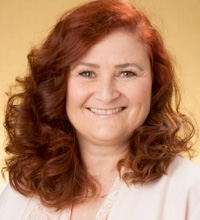 Judi Cunningham is a visiting scholar at the Cox Family Enterprise Center of Kennesaw State University. She also co-founded the Business Families Center (BFC) at the University of British Columbia’s Sauder School of Business. She was a presenter at the 2016 FFI Research & Education Symposium. Judi can be reached at judi.cunningham@me.com.
Judi Cunningham is a visiting scholar at the Cox Family Enterprise Center of Kennesaw State University. She also co-founded the Business Families Center (BFC) at the University of British Columbia’s Sauder School of Business. She was a presenter at the 2016 FFI Research & Education Symposium. Judi can be reached at judi.cunningham@me.com.
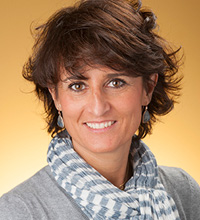 Gaia Marchisio is the executive director of the Cox Family Enterprise Center of Kennesaw State University. She was the chair of the 2016 FFI Research & Education Symposium in Miami. Gaia can be reached at gmarchis@kennesaw.edu.
Gaia Marchisio is the executive director of the Cox Family Enterprise Center of Kennesaw State University. She was the chair of the 2016 FFI Research & Education Symposium in Miami. Gaia can be reached at gmarchis@kennesaw.edu.
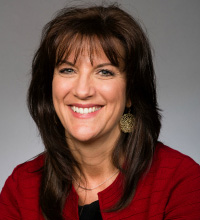 Wendy Sage-Hayward is a senior consultant with The Family Business Consulting Group. She can be reached at sage-hayward@thefbcg.com.
Wendy Sage-Hayward is a senior consultant with The Family Business Consulting Group. She can be reached at sage-hayward@thefbcg.com.

View this edition in our enhanced digital edition format with supporting visual insight and information.



